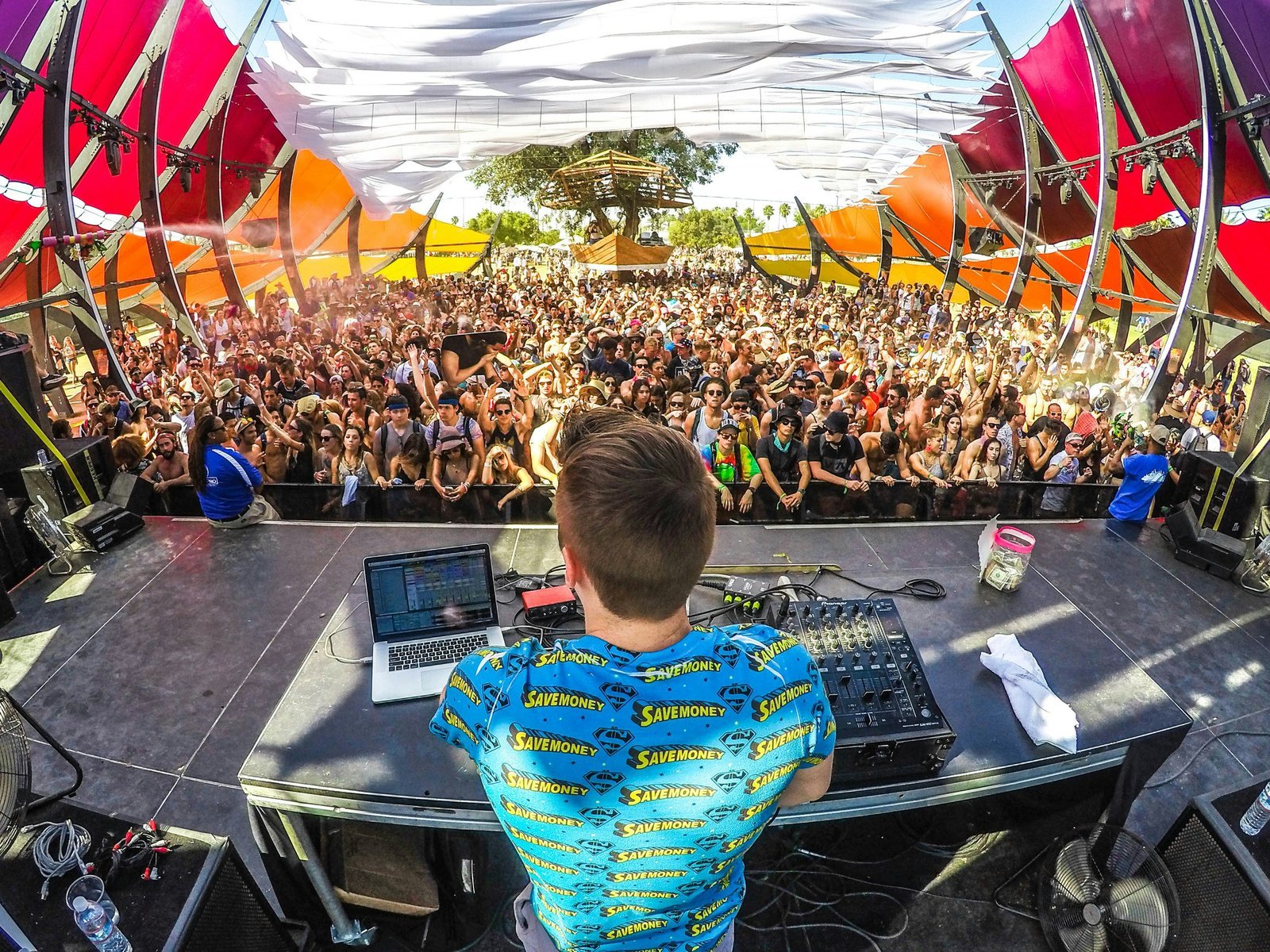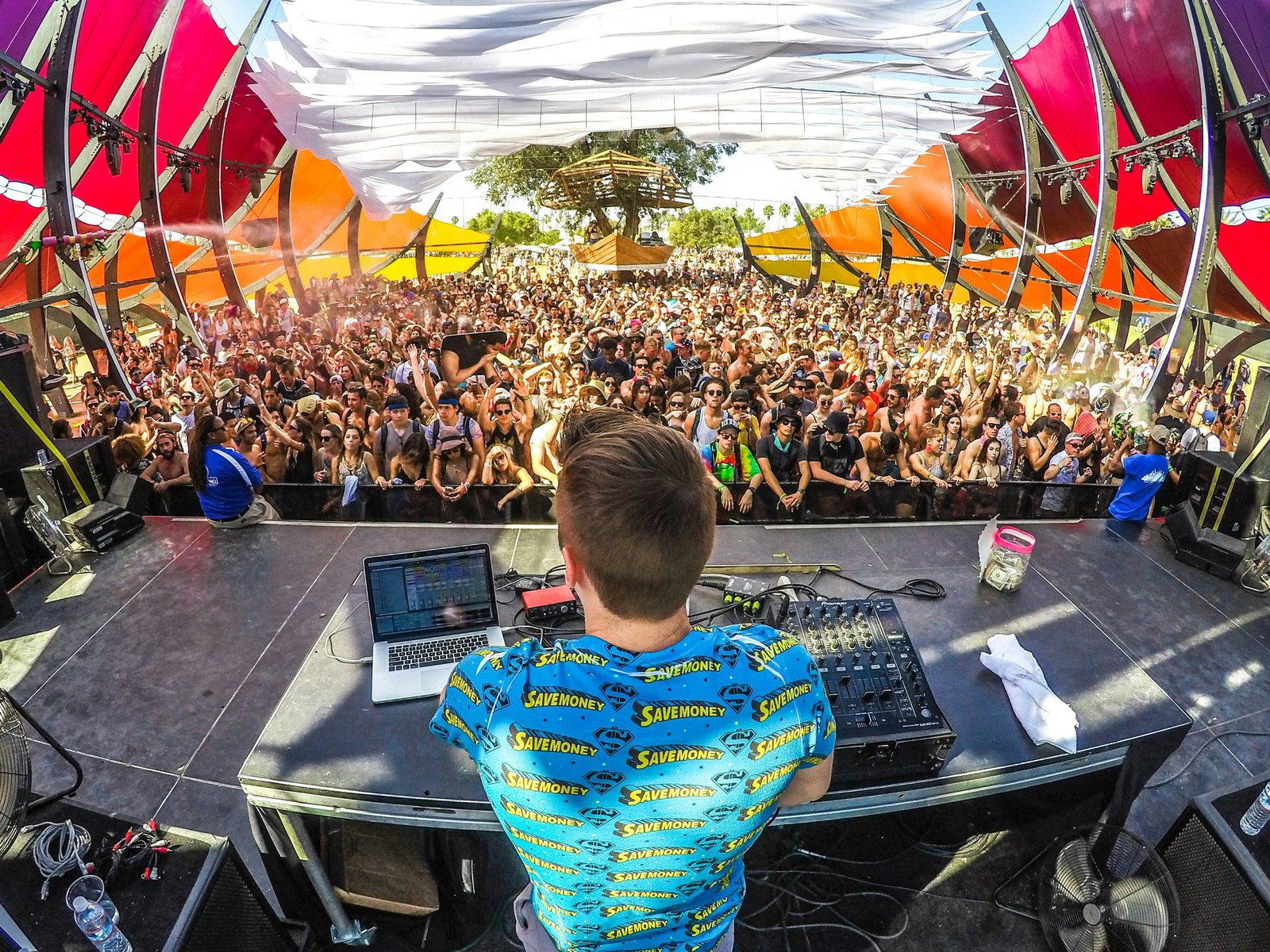
Introduction to Madagascar’s Rich Cultural Heritage
Madagascar, an island nation nestled off the southeastern coast of Africa, boasts a rich and diverse cultural heritage that reflects the amalgamation of its indigenous peoples and varied historical influences. This unique cultural landscape is characterized by a multitude of languages, customs, and artistic expressions that have evolved over centuries. One of the most vibrant facets of Malagasy culture is its traditional music and dance, which play a fundamental role in the country’s numerous festivals, serving as important mediums for storytelling, social cohesion, and communal celebration.
Festivals in Madagascar are not merely events; they are encapsulations of the Malagasy way of life, where music and dance serve as vital components of identity and expression. These culturally significant happenings often center around community gatherings that uphold the values of family and togetherness. Traditional music, which includes an array of unique instruments and musical styles, carries the rhythms and melodies that resonate deeply with the Malagasy people. The incorporation of dance into these festivities accentuates the emotional and spiritual dimensions of the celebrations, allowing individuals to express feelings, honor ancestors, and create bonds within the community.
Overview of Traditional Music in Madagascar
Madagascar, an island nation rich in cultural diversity, showcases a vibrant musical heritage that reflects its varied ethnic communities and unique historical influences. Traditional music in Madagascar is characterized by its regional variations, each region employing distinct styles and instruments that uniquely express the local culture. The varying landscape, from coastal areas to highland plateaus, not only shapes the musical traditions but also influences the instruments and genres prominent in each locale.
One of the most iconic musical instruments in Madagascar is the valiha, a bamboo tube zither. The valiha is often central to social gatherings and festivals, producing melodic sounds reminiscent of the island’s tranquil environment. Typically played during celebrations, it serves to enhance the communal atmosphere, inviting participation from all attendees. Similarly, the kabosy, a stringed instrument resembling a guitar, is another emblematic feature of Malagasy music. This instrument is known for its rhythmic and harmonic richness, making it a fundamental element in traditional music performances.
Musical expressions within Madagascar go beyond mere entertainment; they often narrate the stories, emotions, and experiences of the Malagasy people. In village celebrations and social events, music acts as a medium to convey cultural identity, strengthening communal bonds. Traditional songs are frequently performed during rites of passage, weddings, and harvest festivals, emphasizing music’s inherent role in marking important life events. Moreover, the integration of dance with music reinforces the narratives conveyed, making these performances a holistic representation of Malagasy culture.
Overall, traditional music in Madagascar stands as a testament to the island’s rich heritage, showcasing a tapestry of sounds that are integral to the cultural identity of its people. The interplay between instrumentation and social context underscores how music serves both as a form of art and a vehicle for storytelling within the diverse communities across the island.
The Role of Dance in Malagasy Festivals
Dance plays a crucial role in the vibrant tapestry of Madagascar’s cultural festivities, serving as both an artistic expression and a medium for storytelling. Traditional dance forms are diverse, reflecting the myriad ethnicities and regional variations found throughout the island. Each dance form carries its unique significance, often linked to the themes of celebration, mourning, or initiation, thus enriching the overall festival experience.
One of the most prominent dance styles is the “Hira Gasy,” which combines music, dance, and theatrical elements. Originating from the highlands, this performance art allows participants to convey historical narratives and moral lessons through dynamic movements and engaging storytelling. The Hira Gasy often resonates with the communal spirit of the festival, drawing in audiences and fostering a sense of unity among participants.
Another noteworthy dance is the “Sodina,” characterized by its lively rhythm and vigorous movements, symbolizing joy and community togetherness. Traditionally performed during harvest festivals, this dance invites members of the community to celebrate bountiful yields, fortifying societal bonds while promoting a collective identity. The integration of vibrant costumes and live music enhances the atmosphere, turning each festival into a spectacular visual and auditory occasion.
Furthermore, dance in Malagasy festivals is not solely for entertainment; it also serves as a powerful conduit for cultural expression and preservation. Through intricate movements and specific gestures, dancers articulate their cultural narratives, ensuring that the tales of ancestors and historical events are passed down through generations. This communal aspect of dance fosters an environment where tradition thrives, allowing younger generations to connect with their heritage while reinforcing the importance of cultural continuity.
In summary, the role of dance in Malagasy festivals transcends mere performance; it is a vibrant expression of community, history, and identity, making it an indispensable element in Madagascar’s rich cultural celebrations.
Major Festivals Celebrating Music and Dance
Madagascar, an island nation known for its rich cultural heritage, offers a myriad of festivals that highlight its unique music and dance traditions. Two significant events that encapsulate the spirit of Malagasy culture are the Famadihana, or the Turning of the Bones, and the Donia Music Festival. These festivals not only serve to celebrate the nation’s music but also reflect the strong communal ties and ancestral reverence found in Malagasy society.
The Famadihana is a deeply spiritual event traditionally held every five to seven years. During this festival, families gather to celebrate and honor their deceased ancestors. The practice involves exhuming the remains of ancestors from their tombs, rewrapping them in fresh shrouds, and engaging in joyful celebrations that include traditional music and dance. The lively atmosphere is enhanced by the presence of folk songs, often played on instruments such as the valiha, a bamboo tube zither endemic to Madagascar. This festival signifies not only remembrance but also the expression of a continuing relationship with loved ones who have passed away.
On the other hand, the Donia Music Festival, held annually on the island of Nosy Be, celebrates contemporary and traditional Malagasy music on a grand scale. Established in 1993, this festival attracts musicians from various genres and emphasizes the importance of preserving Malagasy musical traditions while embracing modern influences. Thousands of attendees gather to experience performances that range from traditional styles, such as salegy and tsapiky, to global music. The festival is a vibrant convergence of national pride and cultural expression, showcasing the diverse talents of artists while promoting unity among the Malagasy people through song and dance.
These festivals serve as an essential reminder of Madagascar’s cultural fabric, wherein music and dance play integral roles in companionship, celebration, and remembrance. Their significance facilitates a deeper understanding of the ways in which Malagasy people honor their past while paving the way for future generations.
Significant Instruments and Their Cultural Importance
Madagascar boasts a diverse array of traditional musical instruments, each embodying unique cultural narratives and contributing to the rich tapestry of its festival spirit. Among these, the valiha holds a prominent place. This bamboo tube zither, crafted meticulously from locally sourced bamboo, produces ethereal sounds that often accompany dances during significant celebrations. The valiha’s construction involves intricate methods, with artisans selecting specific bamboo types to ensure quality tonal resonance. Symbolically, it represents unity and harmony, often played in communal gatherings, reinforcing the collective spirit integral to Malagasy culture.
Another vital instrument is the marovany, a traditional box lute made from wood and often adorned with decorative motifs. The marovany’s rich, melodic tones resonate deeply within the cultural fabric of Malagasy music, often paired with dances that narrate historical tales or celebrate agricultural cycles. Its sound is emblematic of the island’s nature, reflecting how closely the people’s lives are intertwined with their environment. The craftsmanship involved in creating a marovany showcases not only musical skill but also artistic expression, as each piece is distinctively crafted to tell its own story.
The tromba is another significant instrument, functioning primarily in ceremonial contexts, particularly in spiritual and ancestral rites. Traditionally made from clay or wood, the tromba produces deep, resonant sounds that evoke a sense of reverence and connection to the past. Each blow of this wind instrument serves to bridge the gap between the living and the ancestral spirits, thus enriching the celebratory atmosphere of festivals. The diverse array of instruments in Malagasy traditional music stands as a testament to the island’s cultural heritage, each contributing to the narratives of identity, community, and festivity that define Madagascar’s vibrant festival spirit.
The Influence of Modernity on Traditional Practices
The intricate tapestry of Madagascar’s cultural heritage, particularly its music and dance, faces significant challenges and transformations in the wake of modernity and globalization. Traditional practices, which have thrived for centuries, are now navigating the dual forces of preservation and adaptation. This phenomenon is not unique to Madagascar; as interconnectivity increases globally, local cultures often find themselves reinterpreting centuries-old traditions to align with contemporary tastes and influences.
A key aspect of this evolution is the emergence of fusion genres, where traditional Malagasy music incorporates elements from other musical traditions. For example, artists may blend traditional instruments like the valiha—a tube zither made from bamboo—with modern electronic sounds or styles from other parts of the world, such as hip-hop or jazz. This amalgamation not only breathes new life into Madagascar’s rich musical landscape but also attracts a younger audience who are increasingly influenced by global pop culture.
Furthermore, festivals dedicated to celebrating heritage have begun to adapt, often showcasing these innovative fusions alongside traditional performances. Such events serve as a platform for artists to explore new styles while remaining grounded in their cultural roots. However, the balance between maintaining authenticity and embracing modernity is delicate, as there can be concerns about the dilution of traditional practices. As younger generations show interest in renegotiating their cultural identity, the challenge is to find a path that honors the past while welcoming the future.
Ultimately, the influence of modernization on Madagascar’s traditional music and dance reflects a broader narrative of cultural evolution. Addressing the dynamics of change is crucial, as Madagascar navigates this intricate landscape, ensuring its vibrant traditions continue to thrive in an ever-changing world.
Choreography and Symbolism in Malagasy Dance
Madagascar, an island rich in cultural heritage, exhibits a variety of dance styles that are deeply embedded in its traditions. Each dance not only serves as a means of entertainment during festivals but also conveys historical narratives, spiritual beliefs, and social values. The choreography of Malagasy dance is characterized by its intricate movements, rhythms, and formations, reflecting the island’s diverse ethnic backgrounds. Various dance styles such as the Hira Gasy and the Tsapiky showcase unique elements that portray the rich tapestry of Malagasy life.
The Hira Gasy, for instance, integrates song and dance, often used to narrate stories and convey moral lessons. The choreography involves expressive hand movements and footwork that symbolize various aspects of daily life. Similarly, Tsapiky is known for its energetic rhythms and rapid movements, often accompanied by live guitar music. This form of dance has evolved to become a representation of the Betsileo people’s cultural identity, celebrating life’s joys and sorrows through dynamic physical expression.
In many festivals, the choreography is a powerful tool for storytelling, where each movement can signify specific themes such as fertility, harvest, or devotion to ancestors. For example, dances performed during the Famadihana, or “turning of the bones” ceremony, embody reverence for ancestors, with specific steps mirroring the cyclical nature of life and death. The importance of these movements cannot be overstated, as they encapsulate cultural narratives and instill values within the community. Furthermore, witnessing these performances allows audiences to experience a profound connection to Malagasy heritage, as dance serves both as a celebration and a conduit for cultural continuity.
Through choreography and symbolism, Malagasy dance captures the essence of the island’s soul, reminding participants and viewers alike of their shared history and identity, and enhancing the vibrant atmosphere of the festivals celebrated throughout Madagascar.
Community Engagement and Participation in Festivals
Festivals in Madagascar serve as vital platforms for community engagement and participation, transcending the role of mere spectator events. These cultural celebrations are organized collectively, drawing in various community members who contribute in diverse ways. The intricate organization of festivals typically involves local groups that coordinate logistics, create schedules, and manage resources, emphasizing collaboration and shared responsibility. This active involvement fosters a sense of ownership among community members, further strengthening their ties to cultural identity and heritage.
The preparation for these festivals often includes extensive rehearsals of traditional music and dance, where both seasoned performers and enthusiastic novices come together. Community workshops provide opportunities for individuals of all ages to learn and hone their skills, ensuring the transmission of cultural practices from generation to generation. This gathering not only enhances the quality of performances but also cultivates a spirit of camaraderie and collective pride that resonates deeply within the community.
Moreover, attendance at these festive occasions is akin to a communal gathering, where diverse members of society unite in a celebration of shared identity and values. Families, friends, and neighbors come together to witness the showcase of traditional music and dance, reinforcing social bonds. Such participation plays a crucial role in preserving Madagascar’s cultural fabric, as attendees actively engage with performances and contribute to the vibrant atmosphere through their appreciation and support.
The sense of unity that emerges from these communal celebrations cannot be overstated. Festivals function as an integral part of community life, providing a tangible expression of cultural pride and belonging. As participants engage in these lively gatherings, they strengthen their connections to one another and to the traditions that define their identity. Ultimately, the involvement of community members in organizing, performing, and attending festivals exemplifies the powerful role that cultural celebrations play in fostering social cohesion and resilience among the people of Madagascar.
Conclusion: The Enduring Spirit of Malagasy Culture
In reflecting upon the vibrant tapestry of Madagascar’s cultural heritage, it is clear that traditional music and dance serve as foundational elements that unite communities and celebrate identity. These art forms are more than mere entertainment; they are vital expressions of the Malagasy spirit, connecting generations and fostering a sense of belonging among participants and spectators alike. The festivals, showcased throughout the nation’s diverse regions, not only highlight the rich traditions but also play a crucial role in the continuity of Malagasy culture amidst globalization and modernization.
Throughout the blog, we have explored various aspects of these cultural celebrations, emphasizing how traditional music and dance function as a means of storytelling, preservation, and expression. Each festival offers a unique insight into the social fabric of Malagasy society, illustrating the ways in which ritual and performance help to reinforce cultural values and community ties. These gatherings, marked by energetic dance, rhythmic music, and colorful attire, provide a platform for shared experiences and collective memories, thereby cementing their relevance in contemporary life.
The enduring spirit of Malagasy culture, as expressed through its festivals, acts as a vital reminder of the importance of cultural heritage in a rapidly changing world. It is crucial that future generations continue to engage with these traditions, ensuring that the unique artistry of traditional music and dance is not lost, but rather celebrated and adapted. Embracing the narratives woven within these practices will cultivate a deeper appreciation for Madagascar’s rich cultural landscape and encourage ongoing participation in its vibrant festival spirit.



